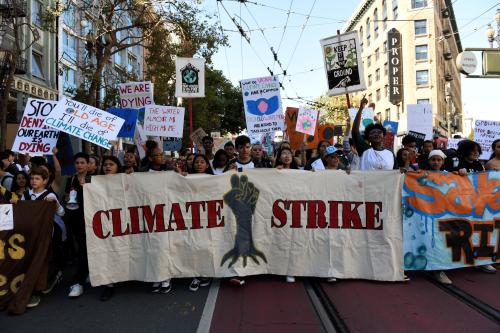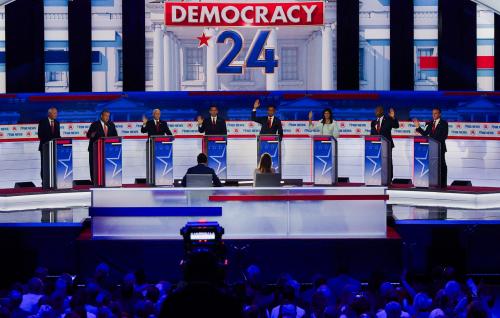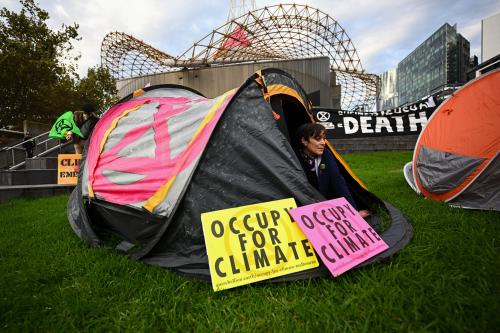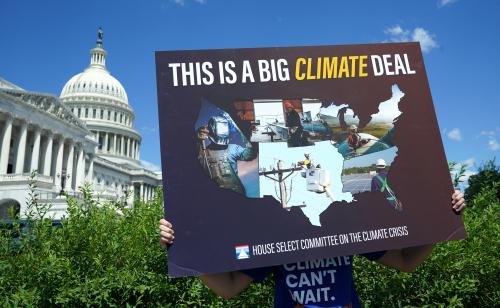For nearly thirty years, every American president from Bill Clinton to Donald Trump has been reliant on administrative powers rather than fresh legislation to pursue their environmental policy goals. This reached new heights during the Barack Obama presidency, and the succeeding Trump administration has largely eviscerated all of the major Obama climate policy efforts via executive orders, regulatory revisions, and administrative stalling, designed to make it as difficult as possible for any successor to shift gears again. Even before Trump’s election, federal courts and aggressive opposition, led by state attorneys general and governors, hobbled some key Obama initiatives such as the Clean Power Plan.
So should the 46th president follow in the footsteps of his immediate four predecessors, possibly as soon as January 2021, and prepare a more far-reaching set of environmental initiatives for an early-term administrative launch, regardless of what happens on the legislative front?
There are already a dizzying array of ideas and proposals being floated for consideration by former Vice President (and presumptive Democratic presidential nominee) Joe Biden. Rejoining the Paris Climate Agreement is easy but is only the start. Among numerous other options in circulation: Declare a climate emergency and reallocate resources. Block pipeline construction and restrict pipeline use. Halt drilling on federal lands and use of fracking technology across the nation. Ban all fossil fuel imports and exports. Place a carbon adjustment fee on imported goods produced through carbon-intensive processes. And on. Presto-chango through unilateral executive power that ignores the legislative branch.
As journalist Timothy Cama noted in a recent E&E News article, advocates are defaulting to strategies involving all-out executive authority as they compete for Biden’s attention. One leader of a major environmental group is quoted as saying, “We think he could actually accomplish pretty much everything you would need to really get the climate crisis under control. Don’t wait on Congress. Don’t wait to see if one type of policy solution works best; just do them all.”
This would be a very risky course of action, particularly if the goals are durable and effective policies designed to position the United States as a global climate leader rather than an erratic laggard. Any such all-out administrative strategy would generate fierce opposition from many states and interests, spanning litigation to compliance refusals. It would trigger a political backlash that could poison any potential legislative initiative regardless of post-election partisan control.
It would also face a federal judiciary not overly friendly to environmental administrative efforts undertaken by either George W. Bush or Barack Obama. Federal courts will likely be even less inclined to be supportive of such steps under a future Democratic president given Donald Trump’s having appointed at least 194 new judges. Indeed, many of the proposed executive actions would likely stick a poker into Supreme Court precedents ranging from Youngstown to Chevron, picking inter-branch and intergovernmental fights likely to be unproductive at best. All such steps would be handed over to federal agencies that have been whipsawed in the Trump era and will require infusions of new resources and talent to resume prior roles, much less adopt massive new ones.
In turn, if the goal of climate policy is sustained impact on greenhouse gas emissions rather than a short-term splash, there is the durability challenge. Recent presidencies suggest that at least two consecutive terms are essential to have a credible chance to launch and sustain executive-based policies, with a third highly preferable (Reagan-to-George H.W. Bush) and a fourth optimal (Roosevelt-to-Truman). Much of the Obama administrative presidency was based on an implicit assumption of a hand-off to an allied successor who would finish the job, putting prior efforts into operation and building upon them. The 2016 election was yet another reminder that long-term party presidential runs are rare. We continue to see a similar pattern in many states, where unilateral gubernatorial actions often sound promising initially but accomplish stunningly little after one or two terms.
Finally, such a strategy would indicate a willingness to approach presidential powers with the same sense of abandon, albeit with fundamentally different policy goals, as Donald Trump. It would suggest a political reality that presumes Congress cannot be a consequential or credible policy player, further hastening a shift toward an increasingly formidable federal executive checked only by courts and states in hostile opposition.
In recent years, I have been studying, with colleagues Frank Thompson and Kenneth Wong, the evolution of presidential power in domestic policy for a new book that will be published by Brookings Press come September. This book will examine the growing penchant for expanding executive authority in multiple areas of federal policy, including climate change, as well as the increasingly prominent role of well-organized states to lead opposition in litigation and implementation, all with a focus on the Obama-to-Trump era.
In the case of climate change, there are ways that administrative powers can and should be used, particularly when policies have a firm constitutional foundation and can build effectively through adaptive mechanisms provided by established legislation. This would include some sections of the Clean Air Act that are tailor-made for such modifications as scientific understanding of risks advances. But there are sobering political and legal limits on what this approach can accomplish. If the United States is to finally move toward a climate policy regime that can prove to be enduring, effective domestically, and consequential globally, Congress must engage constructively.
Any policy route that runs through Congress is daunting but an election is coming and new opportunities may emerge. One consideration is whether there is any future legislative path that involves members of both parties in a hyperpartisan setting where Republicans have routinely blocked climate policy legislation at federal and state levels for the past decade. Current congressional deliberations over separate bills that would phase out hydrofluorocarbons and provide permanent funding for the Land and Water Conservation Fund have continued to move forward with broad bipartisan support in recent months. This is evident even in the Senate, which overwhelmingly approved the latter proposal on June 17. Each could plausibly be approved this year. Neither case would approach the scope of a far-reaching climate bill but both can inform future legislative strategies. They will offer insight into whether any form of legislative bipartisanship is politically feasible on climate change or if instead a purely partisan path is the lone game in town.







Commentary
The limitations of a climate change presidency
June 23, 2020